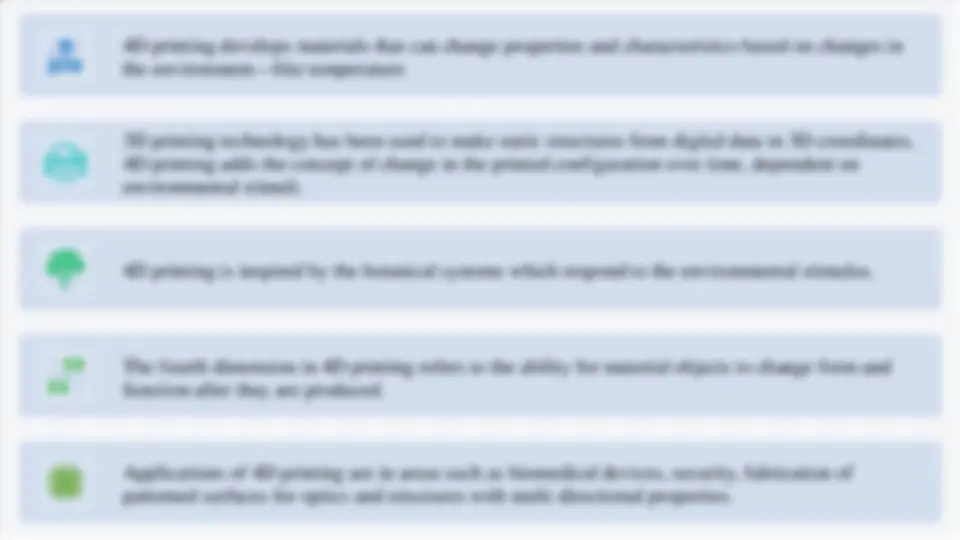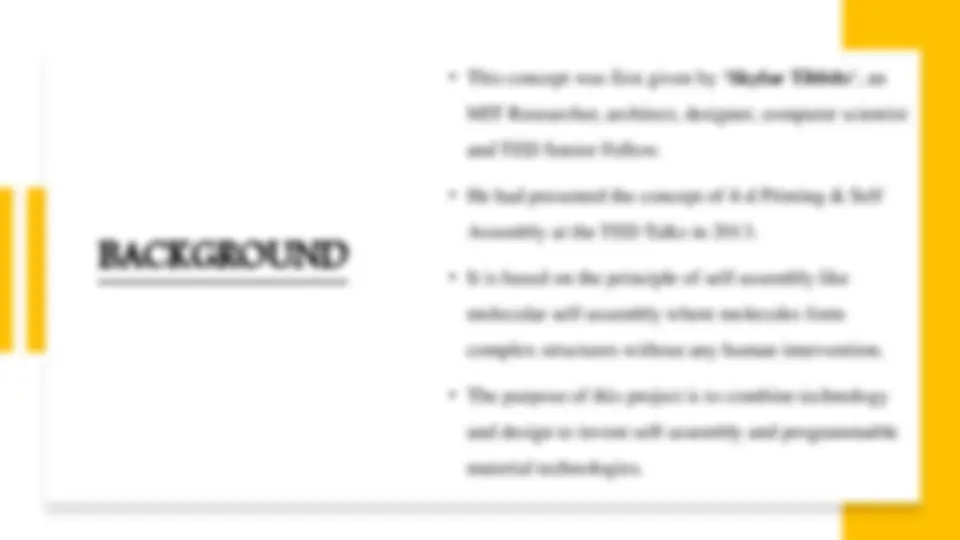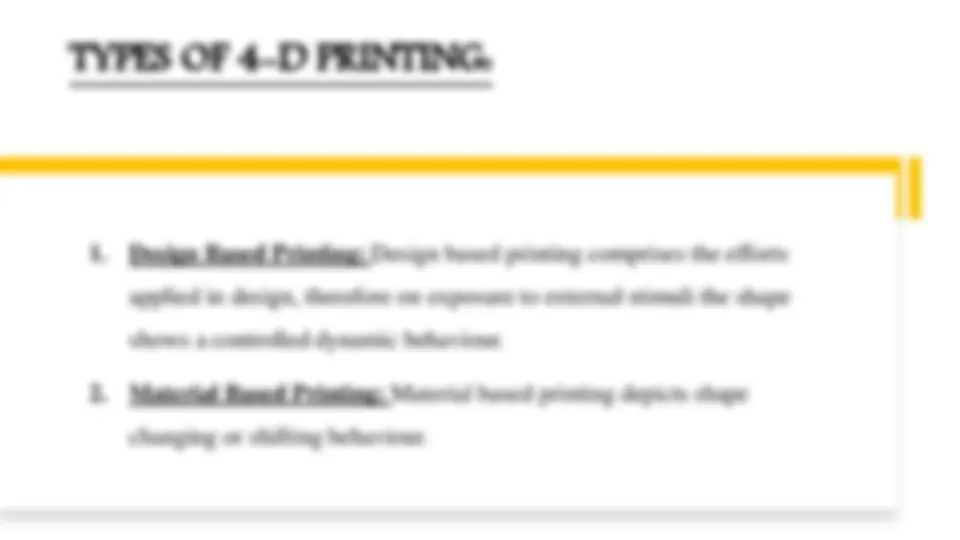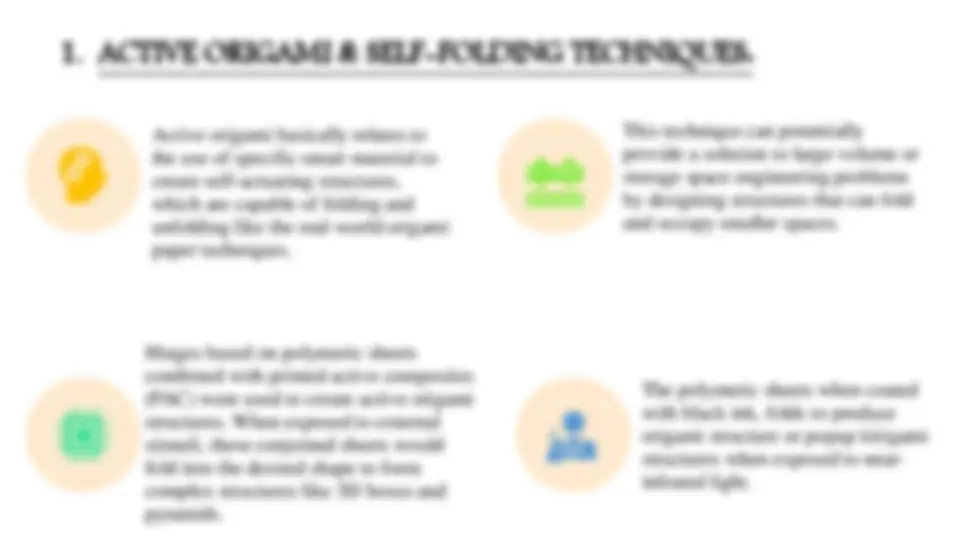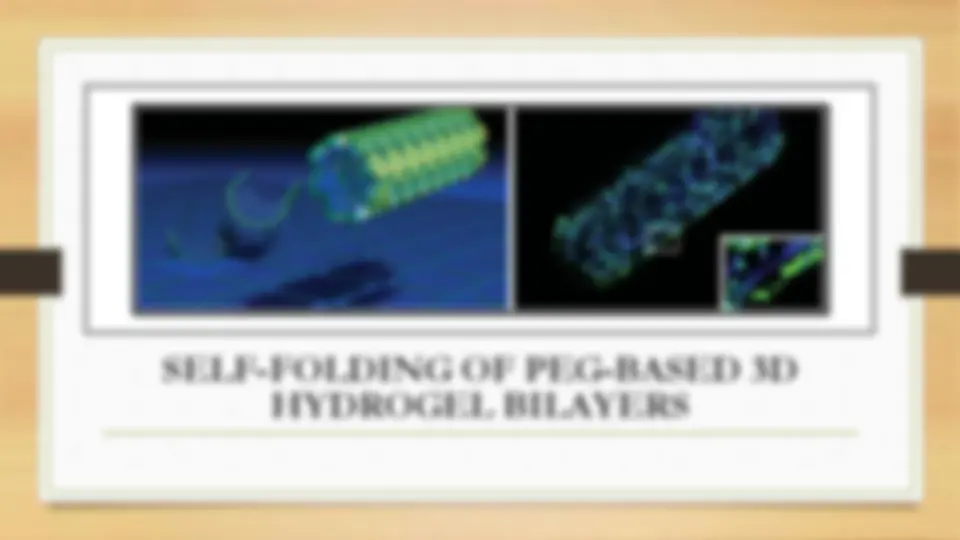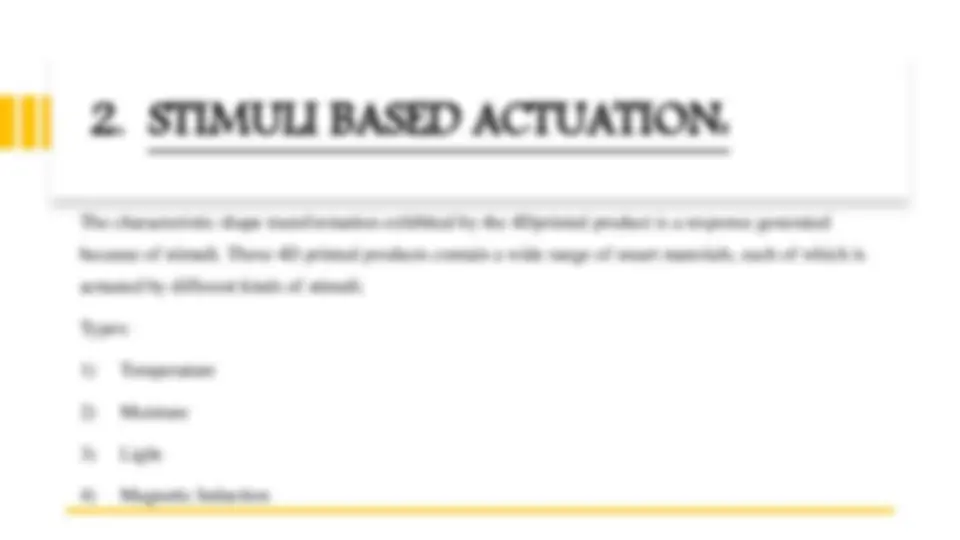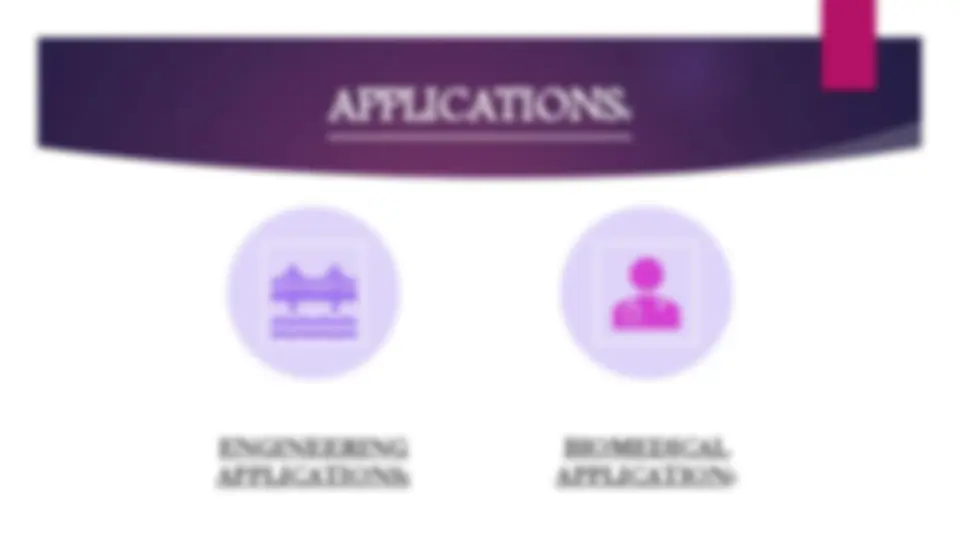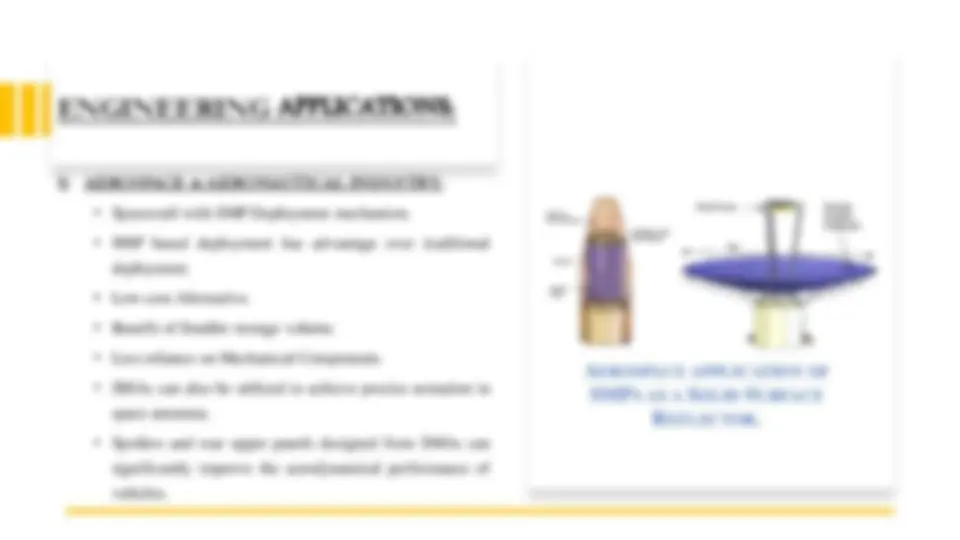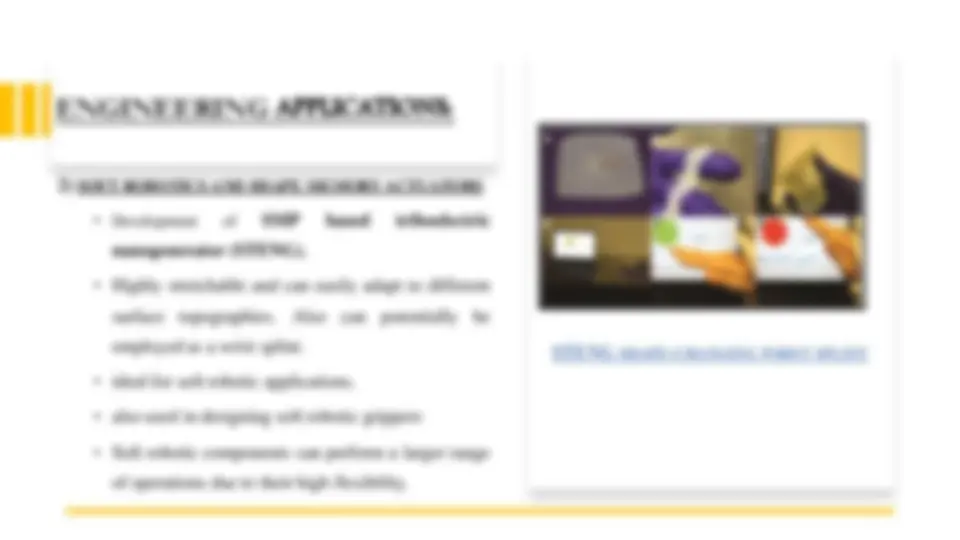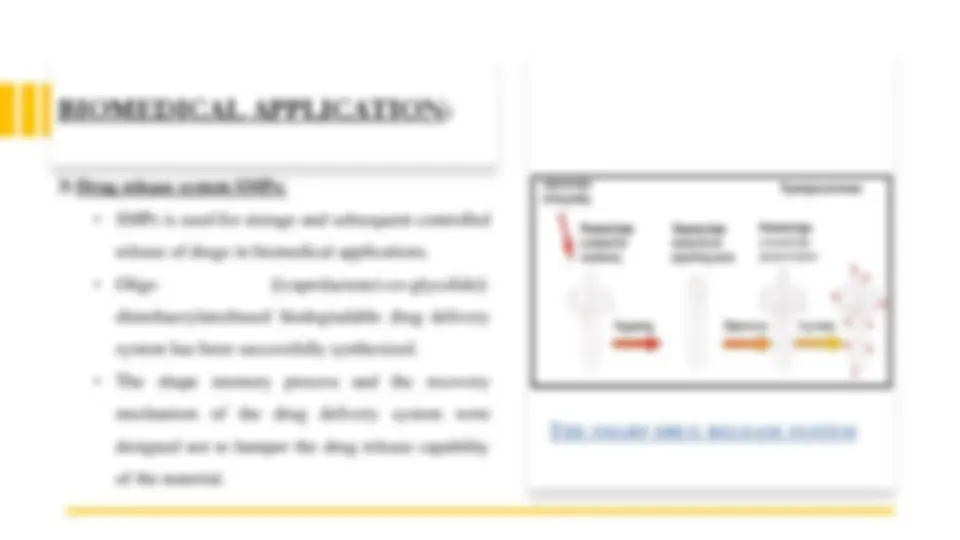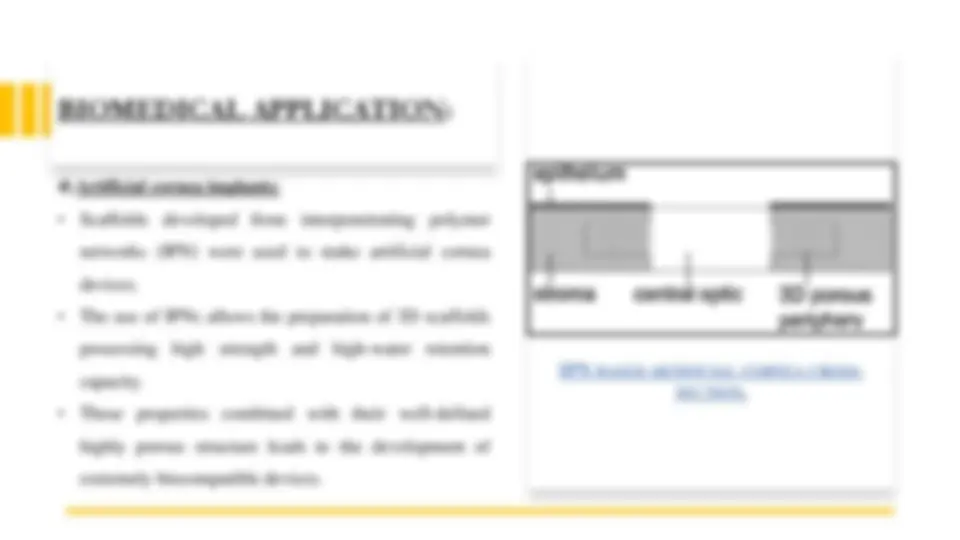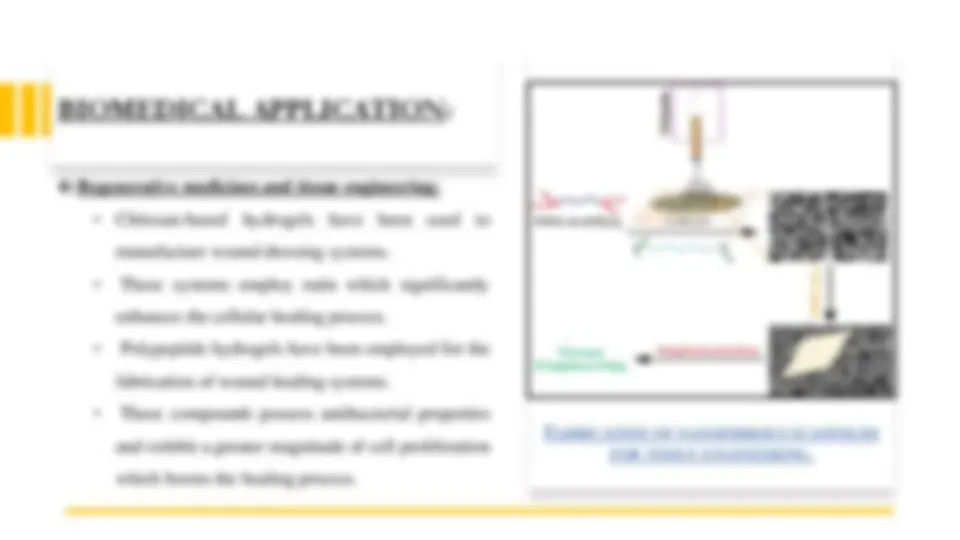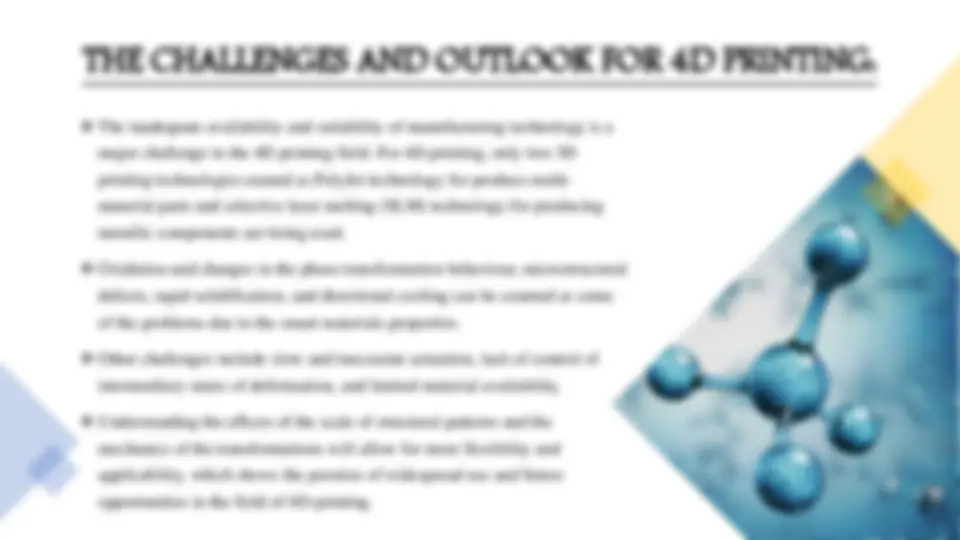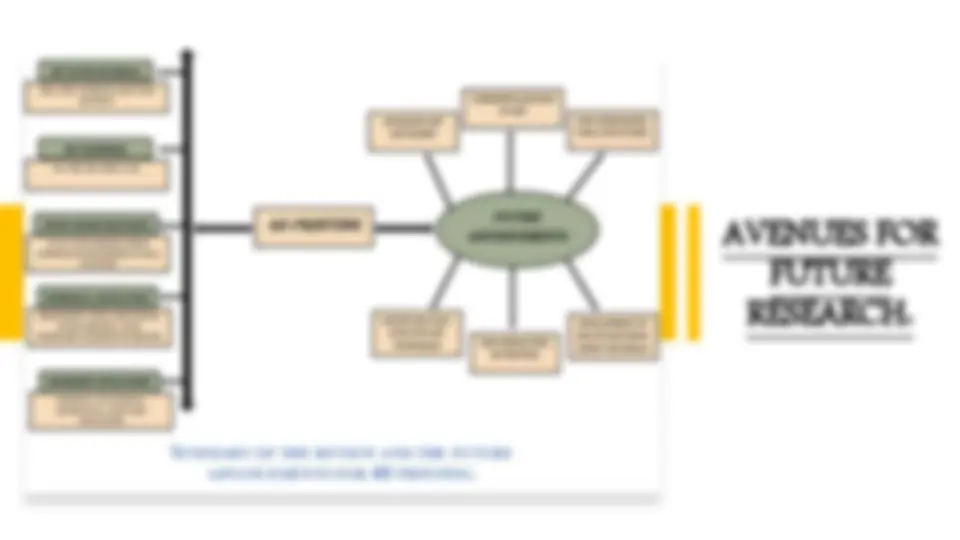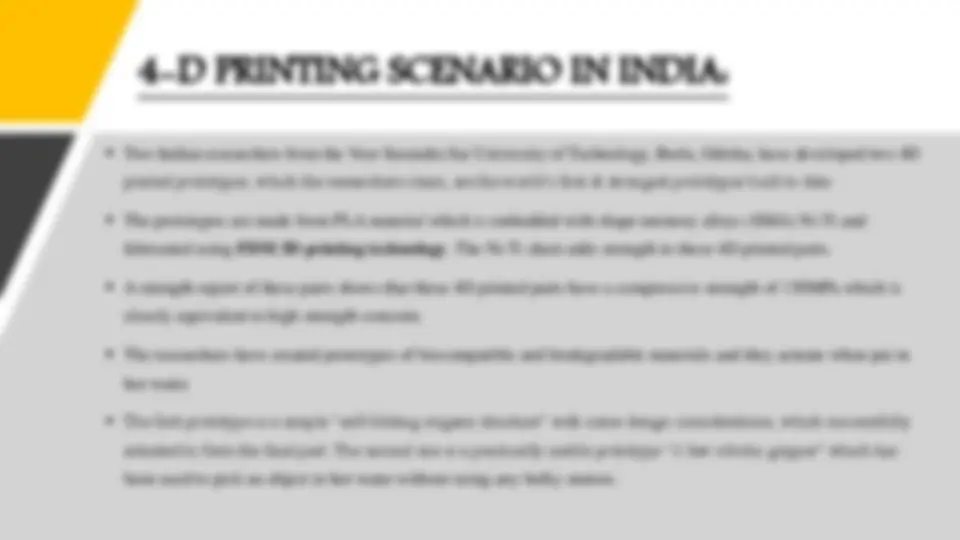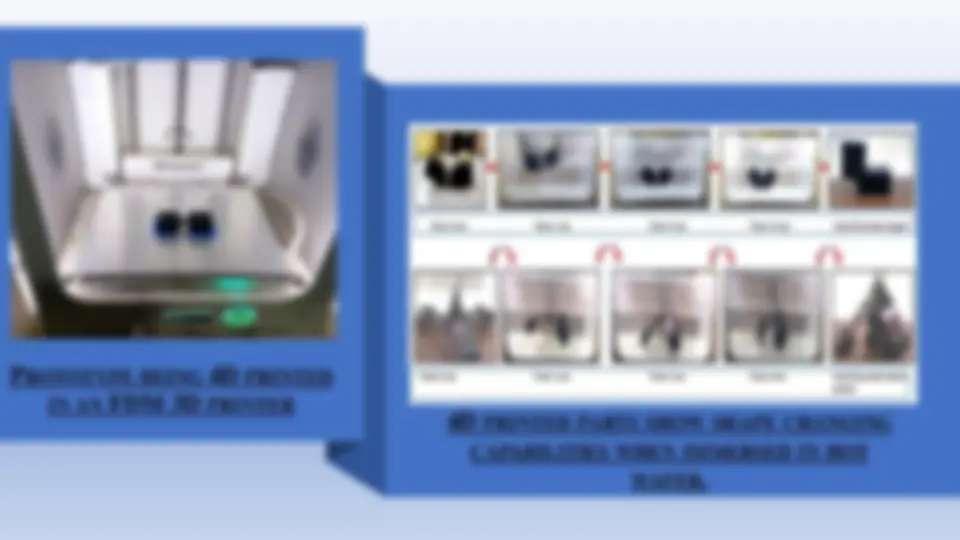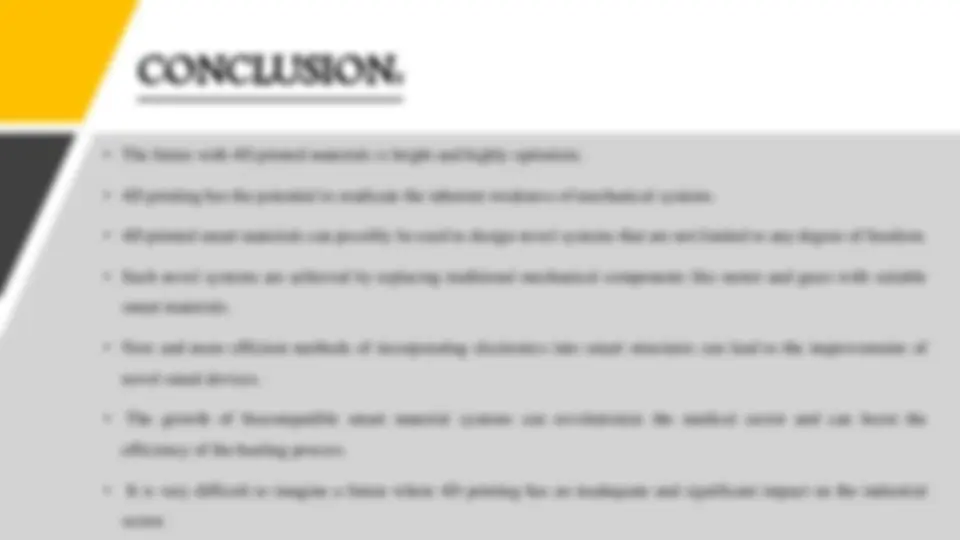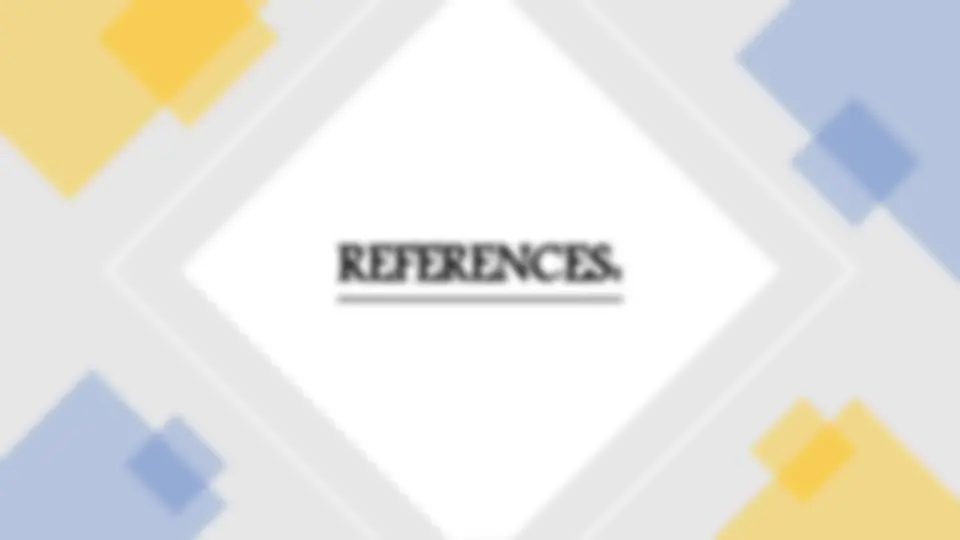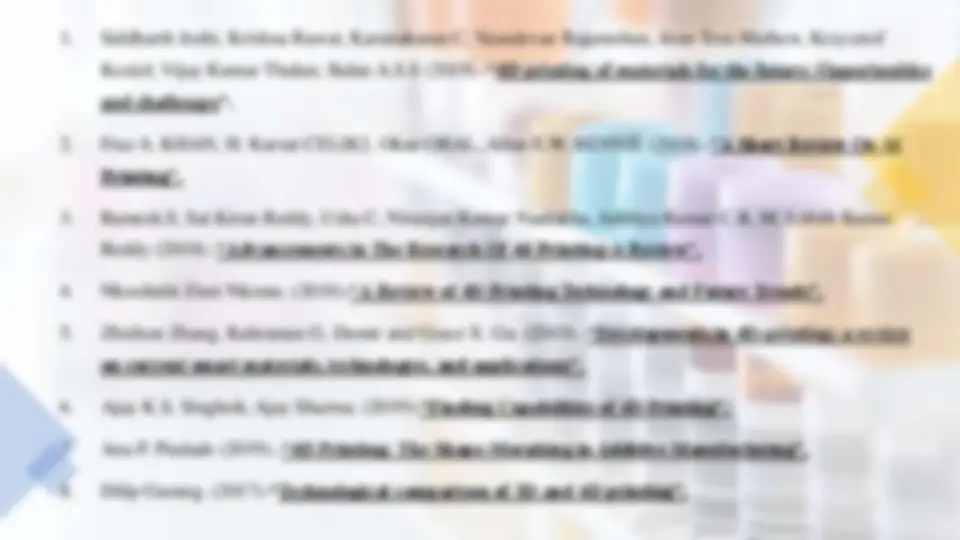Download 4d printing and applications and more Summaries Engineering in PDF only on Docsity!
A Seminar on
4 - D PRINTING
SATHWIK.S
4MW19ME
MECHANICAL (SANDWICH) ENGINEERING
INTRODUCTION
BACKGROUND
- This concept was first given by ‘Skylar Tibbits’ , an
MIT Researcher, architect, designer, computer scientist
and TED Senior Fellow.
- He had presented the concept of 4-d Printing & Self
Assembly at the TED Talks in 2013.
- It is based on the principle of self-assembly like
molecular self-assembly where molecules form
complex structures without any human intervention.
- The purpose of this project is to combine technology
and design to invent self-assembly and programmable
material technologies.
TYPES OF 4-D PRINTING:
1. Design Based Printing: Design based printing comprises the efforts applied in design, therefore on exposure to external stimuli the shape shows a controlled dynamic behaviour. 2. Material Based Printing: Material based printing depicts shape changing or shifting behaviour.
SHAPE CHANGE MECHANISM:
The idea of utilizing the change in the shape of a material is not novel to 4D
printing. Several shape programming techniques exist which utilize this feature. 2D
polymeric sheets are easily converted to 3D sheets by employing certain strategies.
Polymeric sheets are preferable for such processes because they are lightweight, cost-
effective, and extremely flexible.
1. Active origami & self-folding techniques.
2. Stimuli based actuation.
- ACTIVE ORIGAMI & SELF-FOLDING TECHNIQUES:
Active origami basically relates to
the use of specific smart material to
create self-actuating structures,
which are capable of folding and
unfolding like the real-world origami
paper techniques.
This technique can potentially
provide a solution to large volume or
storage space engineering problems
by designing structures that can fold
and occupy smaller spaces.
Hinges based on polymeric sheets
combined with printed active composites
(PAC) were used to create active origami
structures. When exposed to external
stimuli, these conjoined sheets would
fold into the desired shape to form
complex structures like 3D boxes and
pyramids.
The polymeric sheets when coated
with black ink, folds to produce
origami structure or popup kirigami
structures when exposed to near-
infrared light.
- STIMULI BASED ACTUATION:
The characteristic shape transformation exhibited by the 4Dprinted product is a response generated
because of stimuli. These 4D printed products contain a wide range of smart materials, each of which is
actuated by different kinds of stimuli.
Types:
1) Temperature
2) Moisture
3) Light
4) Magnetic Induction
TEMPERATURE-INDUCED ACTUATION: MAGNETICALLY INDUCED ACTUATION:
APPLICATIONS: ENGINEERING APPLICATIONS: BIOMEDICAL APPLICATION:
ENGINEERING APPLICATIONS **:
- AEROSPACE & AERONAUTICAL INDUSTRY:**
- Spacecraft with SMP Deployment mechanism.
- SMP based deployment has advantage over traditional deployment.
- Low-cost Alternative.
- Benefit of Smaller storage volume.
- Less reliance on Mechanical Components.
- SMAs can also be utilized to achieve precise actuation in space antennas.
- Spoilers and rear upper panels designed from SMAs can significantly improve the aerodynamical performance of vehicles.
AEROSPACE APPLICATION OF
SMPS AS A SOLID SURFACE
REFLECTOR.
BIOMEDICAL APPLICATION:
1) Angiography:
- Procedure of introducing suitable materials
into the arteries to locate blocked areas.
- Guidewires composed of stainless-steel were
initially used for this process.
- Nitinol guidewires are now being extensively
used for this purpose.
- They have high flexibility and good kink
resistance.
MODEL OF A NITINOL-BASED STENT
EMPLOYED FOR ANGIOGRAPHY.
**BIOMEDICAL APPLICATION:
- Stents:**
- Designed as a non-invasive way of dealing with physical anomalies.
- Highly expandable and provide means of forming a variety of SMP foams.
- Super elasticity of nitinol makes it ideal for this operation.
- Nitinol exhibits high compatibility with the body and unlike stainless-steel, it does not put a large amount of force on the blood vessels.
(A) PERFORATED SMP STENT (B) SMP
STENT-CATHETER SYSTEM.
**BIOMEDICAL APPLICATION:
- Artificial cornea implants:**
- Scaffolds developed from interpenetrating polymer networks (IPN) were used to make artificial cornea devices.
- The use of IPNs allows the preparation of 3 D scaffolds possessing high strength and high-water retention capacity.
- These properties combined with their well-defined highly porous structure leads to the development of extremely biocompatible devices.
IPN BASED ARTIFICIAL CORNEA CROSS-
SECTION.
**BIOMEDICAL APPLICATION:
- Regenerative medicines and tissue engineering:**
- Chitosan-based hydrogels have been used to manufacture wound dressing systems.
- These systems employ rutin which significantly enhances the cellular healing process.
- Polypeptide hydrogels have been employed for the fabrication of wound healing systems.
- These compounds possess antibacterial properties and exhibit a greater magnitude of cell proliferation which boosts the healing process.
FABRICATION OF NANOFIBROUS SCAFFOLDS
FOR TISSUE ENGINEERING.

